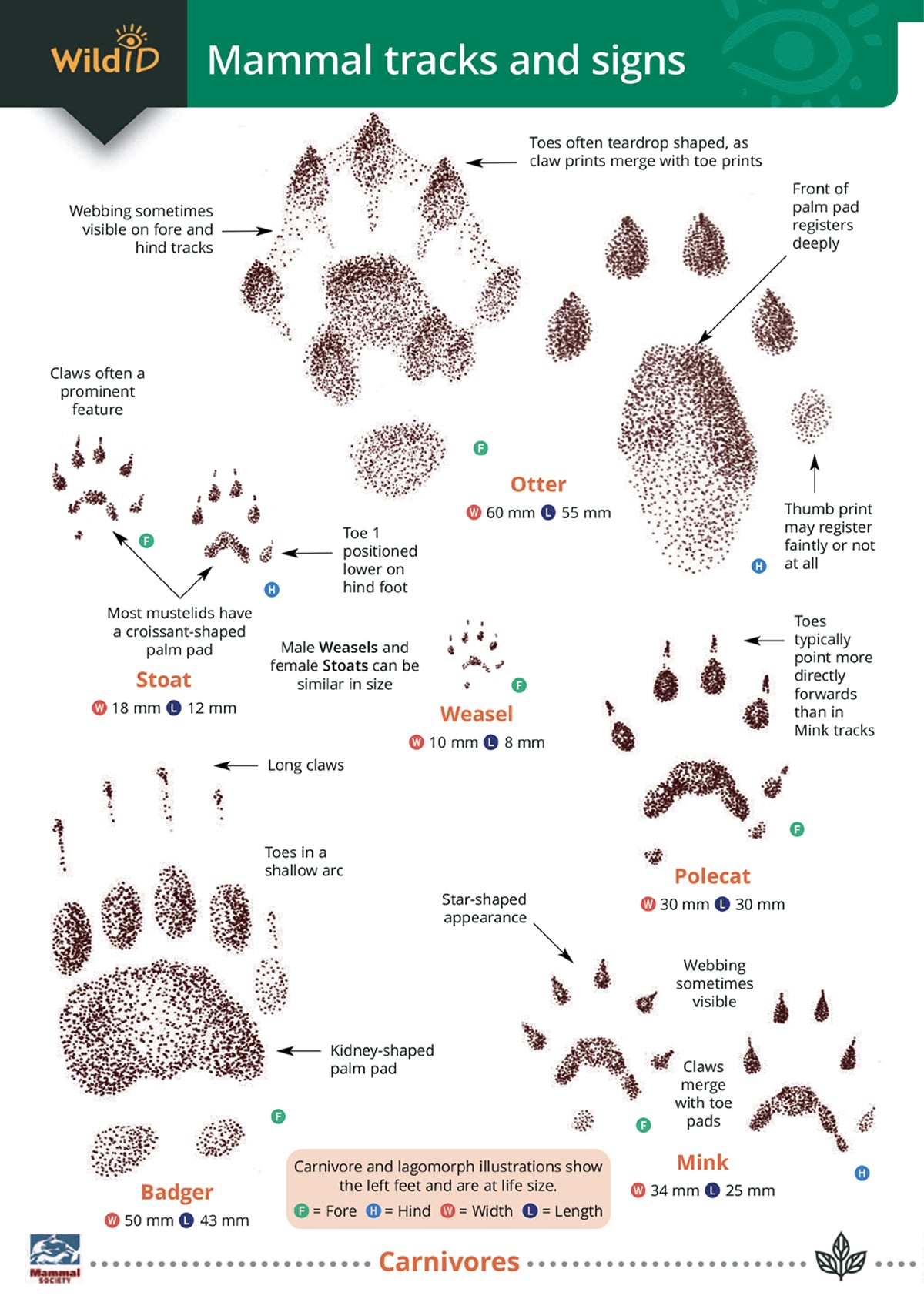Meadow in My Garden
Mammal Tracks
Mammal Tracks
Couldn't load pickup availability
Splashproof 12-panel fold-out field guide
Can be wiped clean
Robust when working outdoors
Rucksack sized - 24.5cm x 17.5cm
Mammal tracks and signs shows tracks and signs left by the wild and domesticated mammals of Britain and Ireland.
Many mammals are shy, making them difficult to see. But the signs that mammals leave, like tracks, droppings and feeding marks, can tell us a lot about which species are present.
Tracks: footprints are very useful. We have also included the tracks left by domestic animals
Droppings: broadly split into the three groups of herbivore, insectivore and carnivore
Burrows and nests: of fox, badger, rat, rabbit, water vole, mice and voles, hazel dormouse, squirrel and harvest mouse
Feeding signs: grazing signs; gnawed hazelnuts; tooth marks
Other signs: miscellaneous clues including roe deer rubs and beds, badger hair and snuffle holes, and beaver signs
This Second Edition has been completely rewritten, with new drawings and photographs throughout. Labelled line drawings show the key identification features of each track. Since perfect footprints are rare, the author has included advice on which features are most reliable. New colour photographs will help you distinguish between the droppings, animal homes and feeding signs. There are more mammals included, especially domestic ungulates. We have also included both the footprints and feeding signs left by beavers.
If you have never tried tracking before, the key thing is to just get out there and start looking. Areas of mud or sand are worth investigating. Often the most frequently encountered tracks will be those of dogs. Even though these aren’t as exciting as finding the tracks of wild animals, it is still worthwhile looking closely at them and getting familiar with what differentiates dogs from other mammals such as foxes. Then when you see something that is not a dog it will be more obvious.
This guide was co-created with the Mammal Society.








